By: Dr. Laura Bennett, Reiki Master and Holistic Sexuality Counselor
Water is more than just a vital resource; it has been revered throughout history as a powerful element in spiritual and healing practices. Across cultures and religions, water has been used as a medium for purification, renewal, and spiritual connection. In this article, we delve into the healing power of water by exploring its role in ancient traditions, modern therapeutic applications, symbolic meanings, and contemporary rituals. By understanding these aspects, we can better integrate the healing properties of water into our holistic wellness routines.
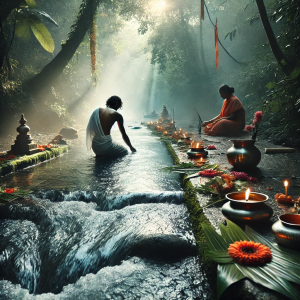
Contents
- 1 Ancient Traditions: Water as a Medium for Purification and Healing
- 2 Modern Applications: Evolving Ancient Practices into Therapeutic Techniques
- 3 Symbolism and Spirituality: The Deeper Meaning of Water
- 4 Ritual Practices: Contemporary Water Healing Rituals
- 5 Integration into Holistic Wellness: Combining Water Healing with Other Practices
- 6 Conclusion
Ancient Traditions: Water as a Medium for Purification and Healing
Throughout history, water has been seen as a sacred element with the power to heal and purify. Ancient cultures recognized its importance and incorporated water into their spiritual practices, often viewing it as a conduit between the physical and spiritual realms.
Celtic Traditions: Sacred Springs and Healing Wells
In Celtic traditions, sacred springs and healing wells were believed to possess extraordinary powers. These natural water sources were considered gateways to the divine, often associated with deities and spirits. Pilgrims would visit these wells to drink the water, bathe in it, or collect it for rituals, believing that it could cure ailments, provide protection, and offer blessings. One of the most famous of these is the Chalice Well in Glastonbury, England, which continues to be a site of pilgrimage and healing.

Hindu River Rituals: The Ganges as a Source of Spiritual Purity
In Hinduism, rivers, particularly the Ganges, are revered as sacred and are believed to have the power to cleanse sins and purify the soul. Rituals involving water, such as bathing in the Ganges, are integral to Hindu spiritual practices. Pilgrims travel from all over India to immerse themselves in the holy waters, seeking spiritual renewal and liberation from the cycle of reincarnation. The Ganges is not only seen as a physical river but as a manifestation of the goddess Ganga, embodying both purity and the flow of life.
The Mikvah in Judaism: Ritual Purification
The mikvah is a Jewish ritual bath used for the purpose of achieving ritual purity. Immersion in the mikvah is a practice that dates back to ancient times and is still observed today. It is used for various purposes, including purification after certain life events, conversion to Judaism, and preparation for religious holidays. The mikvah symbolizes spiritual cleansing and renewal, and the water used in it must be natural, such as rainwater or spring water, emphasizing the purity and sanctity of the ritual.
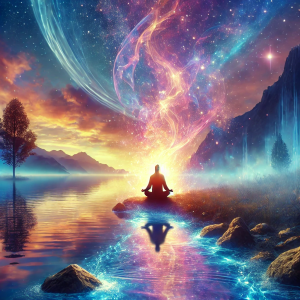
Modern Applications: Evolving Ancient Practices into Therapeutic Techniques
The ancient practices of using water for healing have evolved into modern therapeutic techniques that continue to harness the physical and psychological benefits of water. These practices are now supported by scientific research, which highlights the significant impact of water-based therapies on overall well-being.
Hydrotherapy: Water as a Healing Tool
Hydrotherapy, the use of water for pain relief and treatment, is one of the most common modern applications of water healing. This practice includes various treatments such as water immersion, steam baths, and contrast baths (alternating between hot and cold water). Hydrotherapy has been shown to improve circulation, reduce stress, alleviate pain, and promote relaxation. The therapeutic benefits of water in hydrotherapy are rooted in its ability to support the body, reduce the impact of gravity, and enhance the healing process.
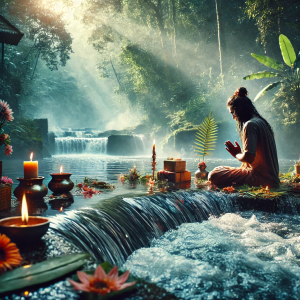
Floatation Therapy: The Modern-Day Healing Spring
Floatation therapy, also known as sensory deprivation therapy, involves floating in a tank filled with saltwater, creating a sensation of weightlessness. This practice is designed to reduce sensory input and promote deep relaxation. The experience of floating can induce a meditative state, reduce stress, and provide relief from physical and mental tension. Floatation therapy can be seen as a modern interpretation of the ancient practice of seeking healing in sacred springs and healing wells.
Healing Springs: The Continuation of Ancient Beliefs
The belief in the healing power of springs persists in many parts of the world. Healing springs, often rich in minerals, attract people seeking relief from various ailments. Locations like the Blue Lagoon in Iceland and Bath in England have become popular destinations for those looking to benefit from the therapeutic properties of natural spring water. These modern healing springs continue the ancient tradition of using water as a source of physical and spiritual healing.

Symbolism and Spirituality: The Deeper Meaning of Water
Water is a powerful symbol in many spiritual traditions, representing life, purity, and renewal. Its symbolic meanings are deeply ingrained in both ancient and contemporary healing practices.
Water as a Symbol of Life and Purity
Water is often seen as the essence of life. It is necessary for survival, and its presence is a prerequisite for growth and renewal. In spiritual contexts, water symbolizes the purity and sanctity of life itself. Many religious rituals involve water as a means of purification, symbolizing the washing away of sins or impurities and the renewal of the spirit.
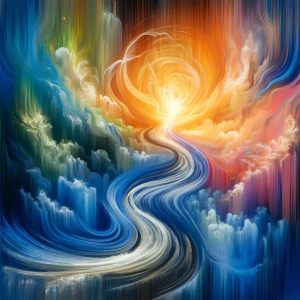
Renewal and Rebirth: Water as a Symbol of Transformation
In many cultures, water is also associated with the concept of rebirth and transformation. The act of immersion in water, whether through baptism, mikvah, or river rituals, symbolizes a death of the old self and a rebirth into a new, purified state. This symbolism is integral to the healing rituals that involve water, as they often aim to facilitate a spiritual or emotional transformation in the participant.
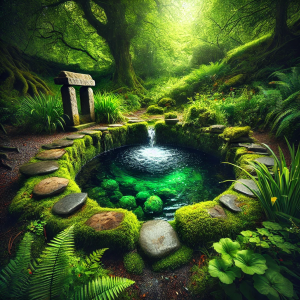
Ritual Practices: Contemporary Water Healing Rituals
In addition to its therapeutic uses, water continues to play a significant role in contemporary spiritual practices. These rituals often draw on ancient traditions while incorporating modern elements, offering a bridge between the past and present.
Moon Water Rituals: Harnessing the Power of the Moon
One popular modern water ritual is the creation of moon water, which involves leaving water out under the light of the full moon to absorb its energy. This water is then used in various spiritual practices, such as anointing, cleansing spaces, or adding to baths for spiritual renewal. Moon water rituals are rooted in the belief that the moon’s energy can enhance the water’s healing properties, making it a powerful tool for personal transformation.

Spiritual Baths: A Ritual of Cleansing and Renewal
Spiritual baths are another contemporary practice that uses water for emotional and spiritual healing. These baths often include herbs, salts, and essential oils, and are intended to cleanse the aura, remove negative energy, and promote relaxation. The act of submerging oneself in a spiritual bath is a form of ritual purification, echoing the ancient practices of immersion in sacred springs or mikvahs.
Meditative Practices by Water: Connecting with Nature
Spending time by bodies of water, such as rivers, lakes, or oceans, is a simple yet profound way to connect with the healing power of water. Meditative practices by water, such as mindful breathing, visualization, or silent contemplation, can enhance one’s spiritual connection and promote inner peace. The soothing sound of water, combined with the natural environment, creates an ideal setting for reflection and emotional healing.
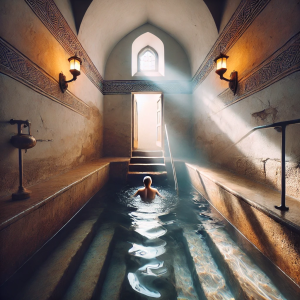
Integration into Holistic Wellness: Combining Water Healing with Other Practices
The healing power of water can be integrated into a holistic wellness routine, offering benefits that encompass the physical, emotional, and spiritual aspects of health.
Water and Energy Healing: Enhancing Reiki and Other Modalities
Water can be a powerful complement to energy healing practices such as Reiki. Incorporating water rituals, such as a cleansing bath before a Reiki session, can enhance the effectiveness of the treatment by preparing the body and mind to receive healing energy. Water’s natural ability to conduct and store energy makes it an ideal medium for amplifying the effects of energy healing modalities.
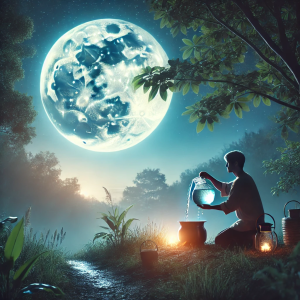
Incorporating Water into Daily Wellness Routines
Incorporating water-based rituals into daily routines can be a simple yet effective way to maintain balance and well-being. Starting the day with a ritual of drinking a glass of water with intention, taking regular spiritual baths, or practicing mindfulness by water are all ways to integrate the healing power of water into everyday life. These practices not only promote physical health but also support emotional and spiritual well-being.
Conclusion
Water is a powerful element that has been revered for its healing properties across cultures and throughout history. From ancient rituals involving sacred springs and rivers to modern therapeutic practices like hydrotherapy and floatation therapy, the healing power of water continues to be recognized and utilized. By understanding the symbolism and spiritual significance of water, and incorporating water-based rituals into our wellness routines, we can tap into its ability to purify, renew, and heal on multiple levels. Whether through ancient traditions or contemporary practices, water remains a vital component of holistic health and spiritual well-being.

